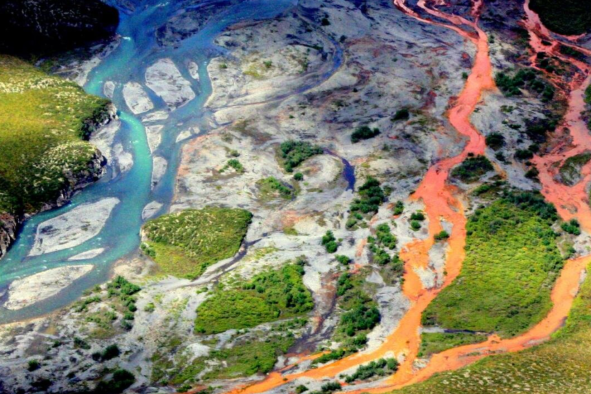A tourist was attacked and seriously injured by a grizzly bear during a "surprise encounter" at a national park.
The 35-year-old Massachusetts man was walking on Signal Mountain Summit Road in Grand Teton National Park on May 19 when two grizzly bears surprised him, the National Park Service said in a statement.
One of the bears took a swipe at the man, causing serious injuries. Grand Teton National Park rangers and Teton County Search and Rescue officials responded to the incident and provided emergency medical assistance at the scene. The man was airlifted to an ambulance that promptly took him to St. John's Hospital.
Although the man was "seriously injured" by the bear, he is now in a stable condition and "expected to fully recover."
An investigation into the incident is ongoing, but so far, law enforcement rangers and park biologists confirmed that it was a "surprise encounter."
The Signal Mountain Summit Road and Signal Mountain Trail, near where the attack happened, are currently closed to the public.
Grizzly bears can be found in all areas of Grand Teton National Park. Although attacks like this one are rare, grizzly bears are skilled predators and can reach 8 feet tall when standing on their hind legs. They are extremely strong and have huge claws.
While they do not seek to attack humans, grizzly bears are an extremely territorial species and can act aggressively in a number of situations, according to the National Park. Most attacks occur when a bear feels threatened, or their cubs feel threatened. They can also lash out if they feel competition for a food source.
Following the incident, the National Park Service issued advice for visitors in order to avoid similar situations.
It advises visitors to avoid leaving food lying around unless it is stored away properly. This is because as opportunistic hunters, bears are often attracted to easy food sources. The same goes for leaving garbage around, which can also attract the animals.
If a visitor comes face to face with a bear, the service urges them to "give it space."
"Always stay at least 100 yards away. If you choose to watch or photograph the bear, use a spotting scope, binoculars, or telephoto lens," it said in a statement. "Park in designated areas, and never block travel lanes. Follow the directions of staff in places where bears are sighted."
When exploring the park's more rural, backcountry areas, it is even more important to be alert, as bears are more likely to be around.
The National Park Service tells those exploring the backcountry to be aware of their surroundings and make noise to ensure wildlife stays clear. Bringing bear spray and hiking in groups is also advisable. If a bear is encountered, backing away slowly is much safer than running away.
Do you have a tip on a science story that Newsweek should be covering? Do you have a question about grizzly bears? Let us know via science@newsweek.com.
Disclaimer: The copyright of this article belongs to the original author. Reposting this article is solely for the purpose of information dissemination and does not constitute any investment advice. If there is any infringement, please contact us immediately. We will make corrections or deletions as necessary. Thank you.



